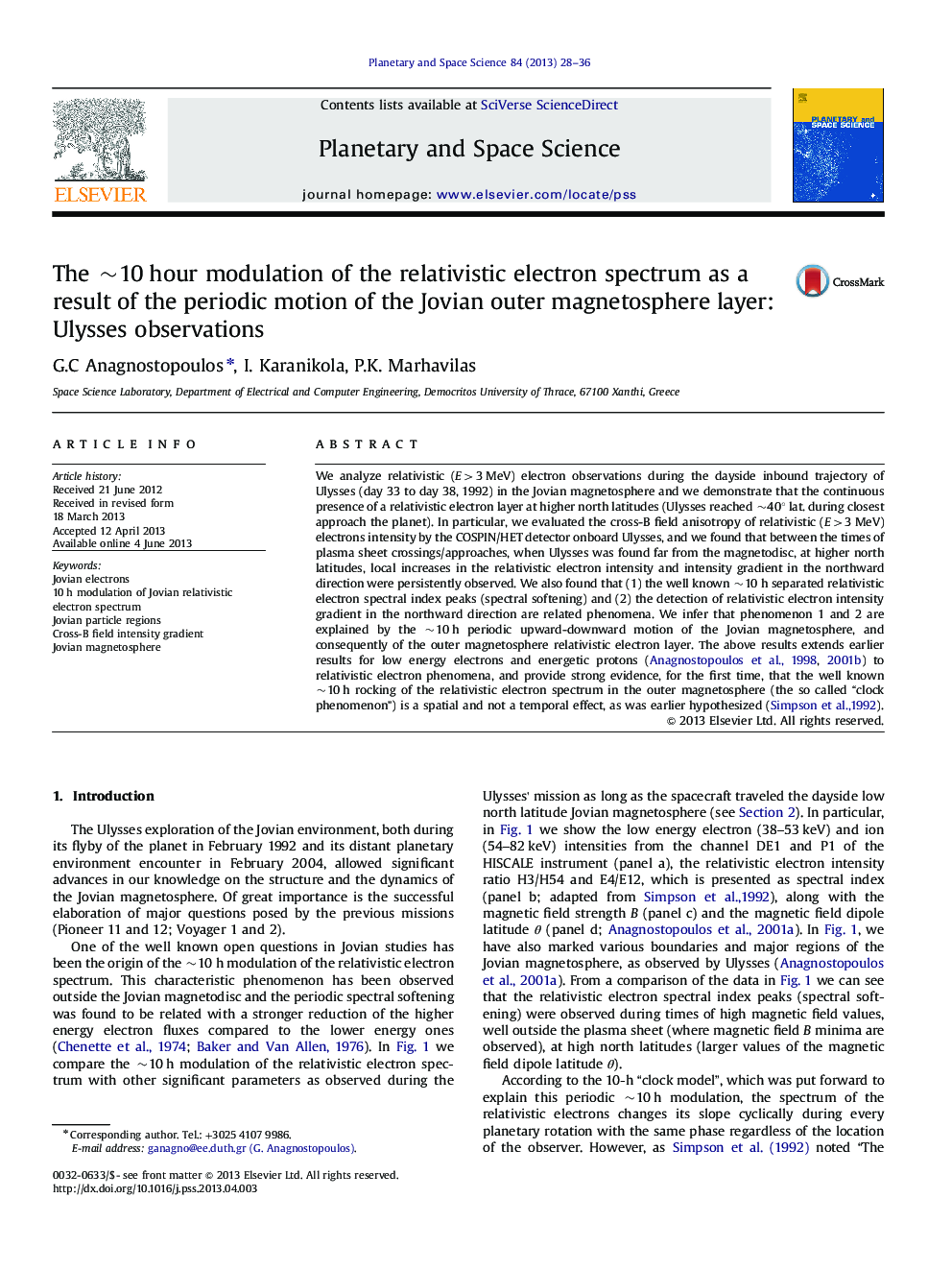| Article ID | Journal | Published Year | Pages | File Type |
|---|---|---|---|---|
| 1781310 | Planetary and Space Science | 2013 | 9 Pages |
Abstract
We analyze relativistic (E>3 MeV) electron observations during the dayside inbound trajectory of Ulysses (day 33 to day 38, 1992) in the Jovian magnetosphere and we demonstrate that the continuous presence of a relativistic electron layer at higher north latitudes (Ulysses reached ~40° lat. during closest approach the planet). In particular, we evaluated the cross-B field anisotropy of relativistic (E>3 MeV) electrons intensity by the COSPIN/HET detector onboard Ulysses, and we found that between the times of plasma sheet crossings/approaches, when Ulysses was found far from the magnetodisc, at higher north latitudes, local increases in the relativistic electron intensity and intensity gradient in the northward direction were persistently observed. We also found that (1) the well known ~10 h separated relativistic electron spectral index peaks (spectral softening) and (2) the detection of relativistic electron intensity gradient in the northward direction are related phenomena. We infer that phenomenon 1 and 2 are explained by the ~10 h periodic upward-downward motion of the Jovian magnetosphere, and consequently of the outer magnetosphere relativistic electron layer. Τhe above results extends earlier results for low energy electrons and energetic protons (Anagnostopoulos et al., 1998, 2001b) to relativistic electron phenomena, and provide strong evidence, for the first time, that the well known ~10 h rocking of the relativistic electron spectrum in the outer magnetosphere (the so called “clock phenomenon”) is a spatial and not a temporal effect, as was earlier hypothesized (Simpson et al.,1992).
Keywords
Related Topics
Physical Sciences and Engineering
Earth and Planetary Sciences
Geophysics
Authors
G.C Anagnostopoulos, I. Karanikola, P.K. Marhavilas,
